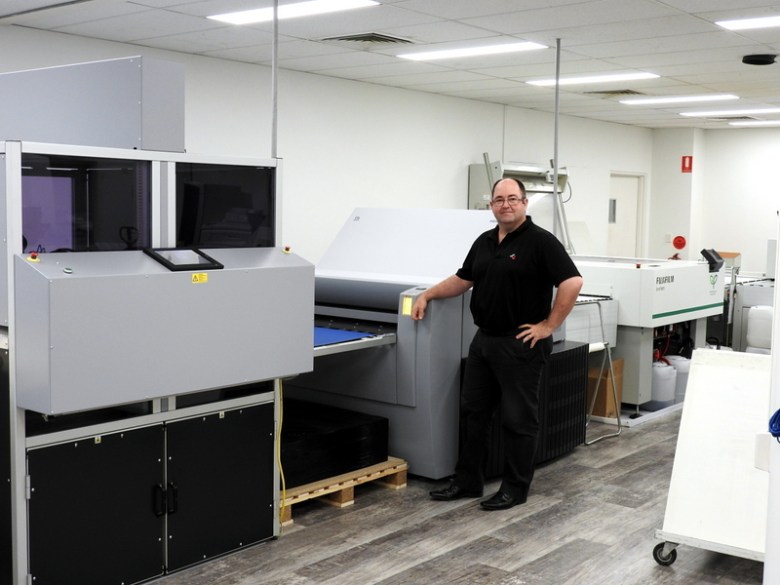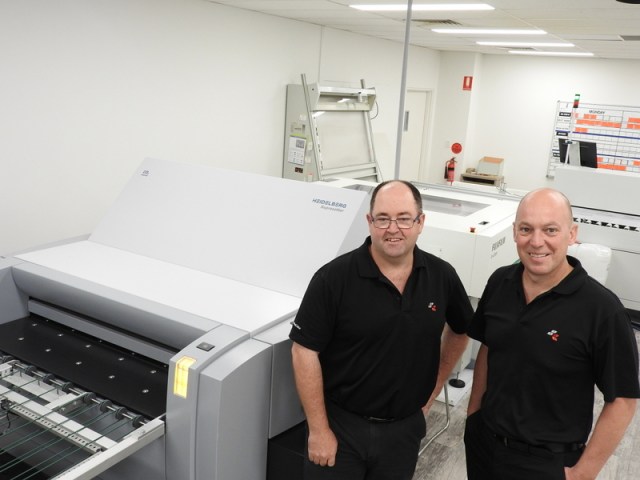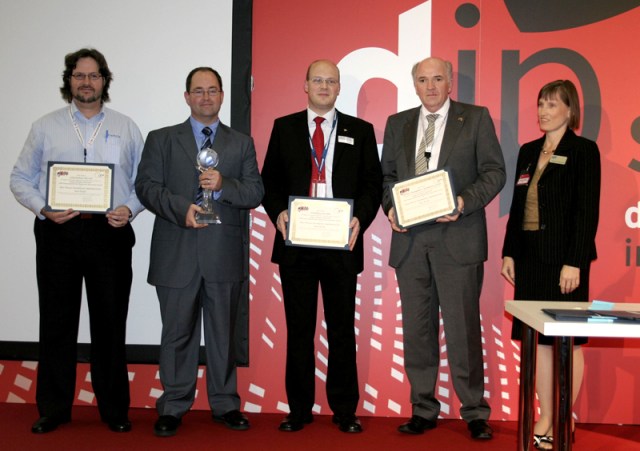
Melbourne printer Southern Colour now has what it calls one of the most automated platemaking lines in the southern hemisphere, with no human interaction apart from bringing in unexposed plates on pallets.
The process uses Fujifilm plates, Heidelberg printers and Nela technology, with one employee being present in the plateroom, ready to replace the 660-plate skid when it runs low. Southern Colour’s Heidelberg XL 106-10 colour and XL 106-6 colour with coater operate for 24 hours four days a week, along with 12 hour shifts for the other two days. Around 42 plates per hour are run through the company’s Suprasetter and Superia ZAC processor.
The company says a constant uninterrupted plate supply is called for to keep up with the Autoplate changing, on-the-fly register control and piped-in Technotrans/ToyoInk automatic ink delivery for the presses. The entire Prinect workflow is JDF-driven, integrated with Heidelberg’s Business Manager and Job ID information is Data Matrix (QR) coded and tracked throughout the entire production workflow.
Southern Colour decided to make the step towards fully automated plate production at the drupa exhibiton two years ago, with the new XL 1-6s already having been ordered by managing director Rod Dawson at drupa 2012.
[Related: Fujifilm swallows Xerox in US$6.1bn deal]
Allan Gardiner, prepress manager at Southern Colour says, “We happened to see an Auto Pallet Loading device made by German company Graphoteam, on the Heidelberg stand. It was automatically lifting plates from a skid, removing interleaves and feeding them into a Suprasetter CtP device which in turn transported the exposed, punched plates into a Fujifilm lo-chem processor and onwards to Nela bending. What impressed us was the complete absence of human intervention, apart from removing empty pallet skids of plate and placing a fresh one ready for uninterrupted supply. All this was at a rate of 42 B1 plates per hour.”
Gardiner says there has been a reduction in plate scratching, due to less human intervention with the Graphoteam APL automating slip sheet removal and plates being suction-fed to the Suprasetter.
The company says its offset litho plate production can rise to 8,000 sqm or more per month in peak times. Southern Colour also says it manages colour precisely to ISO 12647-2 standard, and additionally extended-gamut custom profiles for specific clients such as the Dulux Group, who awarded the company the Supplier of the Year trophy last year.
Southern Colour says the six month project has resulted in an integration of technologies that has also delivered significant environmental benefits in that the Suprasetter 106 is certified CO² neutral and the Fujifilm Superia system delivers savings in water, energy, emissions, labour and chemistry, a ZAC lo-chem processor for the Superia LH-PJE positive working plates. The ZAC system is said to use a fraction of the chemistry and water of the previous Agfa-based system by accurately sensing developer bath conductivity and pH and injecting only the exact amount of replenisher, rather than a fixed dose every so often.
[Related: Blue Star inhales Oxygen]
Gardiner says, “We prefer to see a latent image on the plate and the positive Fujifilm plates provide this for quick recognition. We’ve noticed a reduction in plate processor maintenance and down-time for cleaning and chemistry changes. The Fujifilm ZAC system runs a lot cleaner and therefore requires only routine service calls about every three months. This in turn increases productivity and uptime of the entire system.
“Our press operators receive plates on a trolley that are in the correct colour sequence, for the correct press and for the next job shown on their production screen and ready to be queued in the Autoplate loader. If, on a long-run, a plate wears out the printer can easily order a replacement on-screen. The system then knows what plate/s are needed, sends the data to the plate line and within minutes the replacement plate is stacked and ready for loading. If this happens at 2am on a night shift, it’s no problem as there is no need for people to be present in the plateroom.
“Throughout the whole process, the job I.D. is there and constantly updated, such as adding the press operator’s name and time taken on press. This greatly helps with MIS.”
Richard Timson, managing director for Heidelberg Australia says, “It’s a purpose-built plate production system unlike any other. There are only a handful of similar installations in the world, in places like Switzerland and Austria.”
Southern Colour has 74 employees and is part of Southern Impact Holdings along with Impact Digital, Intelligent Media and label printer Onpack.
Comment below to have your say on this story.
If you have a news story or tip-off, get in touch at editorial@sprinter.com.au.
Sign up to the Sprinter newsletter



